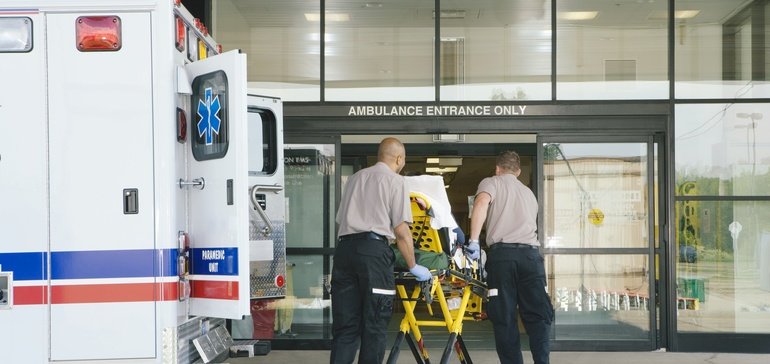
Dive Brief:
- Operating margins at the nation’s hospitals have plummeted due to large-scale volume and revenue declines coupled with flat to rising expenses, according to a new report from Kaufman Hall.
- Based on March data from more than 800 U.S. hospitals, average operating margins dropped 150% year over year, plunging non-profit hospitals, which historically operate on already thin margins, into troublesome territory.
- The data paint a dire picture for U.S. hospitals. “These initial numbers only reflect the first two weeks of the COVID-19 response and likely indicate more negative results in the future,” Jim Blake, managing director at Kaufman Hall, said in a statement.
Dive Insight:
Hospitals depend heavily on elective surgeries for revenue, but had to cancel or postpone many of them starting last month in order to preserve coveted COVID-19 resources such as personal protective equipment, beds and staff.
Those measures have upended the financial health of the entire industry in a matter of just weeks, according to new data and analysis from Kaufman Hall.
“We anticipate April will be significantly worse, and at this point, no one knows how long hospitals will continue on their current path,” Blake said.
Despite the ongoing pandemic, patient volumes overall have plunged. During March, the median hospital occupancy rate was 53%, with operating room minutes down 20% year-over-year and emergency room visits down 15% year over year, according to the report.
At the same time, hospitals’ labor expenses were up 3% year over year, and non-labor expenses were up 1%. In order to rein in operating costs, some health systems have begun to furlough or lay off workers.
While non-profit systems are especially vulnerable given their razor-thin margins, major for-profit systems are also struggling financially.
HCA Healthcare, Community Health Systems and Tenet Healthcare have all pulled their 2020 guidance in response to the pandemic. In its first quarter report Tuesday, HCA attributed a steep decrease in volumes and 45% drop in profit to the pandemic.
And Jefferies analyst wrote in a note Tuesday they are reducing their volume and earnings expectations for those companies for this year and 2021 based on the pandemic. “Our belief is that high unemployment translates to reduced commercial insurance coverage and disposable income to fund co-pays/deductibles, which results in fewer physician visits and procedures,” they wrote.
Under these circumstances, the federal government has attempted to financially support struggling hospitals through ongoing coronavirus relief legislation.
First came accelerated Medicare payments based on reimbursement data, in the form of loans that providers will have to pay back.
Separately, the Coronavirus Aid, Relief, and Economic Security Act passed by Congress in March benchmarked $ 100 billion in funding to provide financial support to struggling hospitals.
A $ 30 billion first round was announced April 8 and given to providers based on historic Medicare payments. A second round of CARES act funding for systems in hot spots is next, although the timing is unclear.
On Tuesday the Senate approved a separate $ 484 billion aid package, the Paycheck Protection Program and Health Care Enhancement Act, that would send an additional $ 75 billion in emergency funds to hospitals. It also allocates $ 25 billion to expand testing for the virus across the country.
The White House expressed support for the package. It still needs House approval, which could happen as soon as this week.
The latest package comes in response to depleted funding for the Small Business Administration’s Paycheck Protection Program. Upon replenishing those funds, smaller health systems may be eligible for forgivable PPP loans used to meet payroll and other operating costs, but only if they have 500 or fewer employees.
